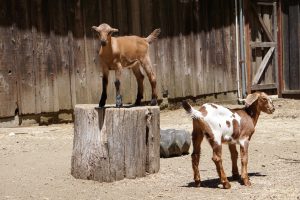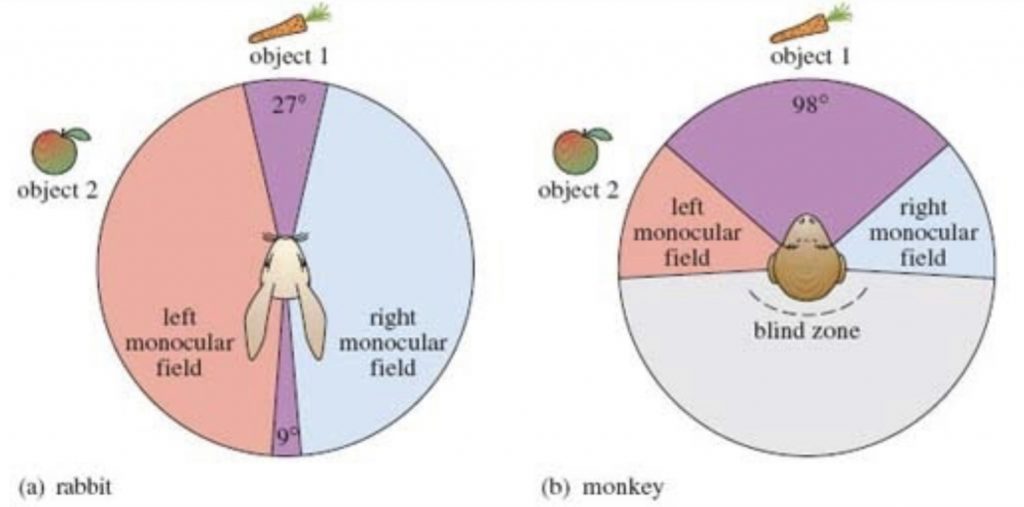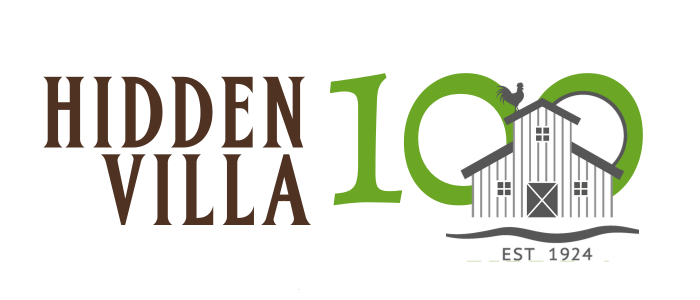
Summary:
Goats have many adaptations (structures that function like tools to help them survive). These include two sets of toes on each foot to help them balance, special eyes to help them see in a wider range to look out for predators, and a 4 chambered stomach to help them digest rough food.
Know-It-All
- What makes a goat a goat? What are some adaptations that goats have?
- What is different about a human eye and goat eye?
- How many toes do goats have on each foot? How many toes are on each goat? How many total goat toes were there in the pen today, including all of the goats?
- What does it mean to be a “ruminant” animal?
- Ungulates are animals with hooves. What other animals have hooves on a farm?
- Look at your own fingernails (or toenails). Are they made of the same stuff as goat hooves?
Digging Deeper
- Panoramic vision – Eyes on the side of the head can see farther behind the head. This is called panoramic vision. For this reason, prey animals often have panoramic vision so they can see predators sneaking up behind them. Animals with forward looking eyes have stereoscopic vision, where the eyes work together to focus, giving them better depth perception which makes them better able to judge distances. This is very useful for stalking prey.

- Ruminants – We mentioned that goats are ruminants. They have a four-chambered stomach. Try to find an image of the goat’s digestive system. It’s pretty cool!
Try It
A) Now that you have seen some of the adaptations of a goat, try to find adaptations in another animal. Find your family pet or a very clear picture of an animal you like. For this activity pick a mammal – an animal that has fur.
- Look carefully at their feet. What do you notice? Does this animal have claws? Does it have pads (soft cushions on the bottom of their feet)? How many toes does it have? Remember, goats have four – two big ones in front, and two smaller ones tucked in behind, called dewclaws. Why do you think this animal has these kinds of adaptations on their feet?
- Look carefully at their eyes. Are they the same as the goats’ eyes or different? Do they point to the front or to the sides? Remember our rhyme: Eyes to the sides, an animal hides. Eyes to the front, an animal hunts.
- Do a little research about cats or dogs or whichever mammal you chose. You might find out some amazing facts about their particular adaptations!
B) Goats have their eyes on the sides of their heads. Each eye has a separate view of the world. That is called monocular vision – when only one eye can focus on an object. To get an idea of how a goat sees the world, give yourself monocular vision. Put the palms of your hands together. Curve your palms slightly so only your finger tips are touching and your thumbs are side by side. Now place your thumbnails as low as you can on your forehead. This will keep your eyes from working together. What does your left eye see? What does your right eye see? Remember that goats can see much farther to the back than you can, but we don’t have a trick for that!
C) Draw a view of a landscape around you as if you had panoramic vision (wide angled, like a goat’s). Start by focusing on an object, like a tree. Look to the left of the tree and draw that landscape. Now, look to the right of the tree and draw that landscape. Tape the two drawings together but do not include the original tree (or object that you used as a focal point). You should have two completely different drawings! That is how a goat sees the world all the time!
Print out the guide by downloading the PDF
#323 Student Guide